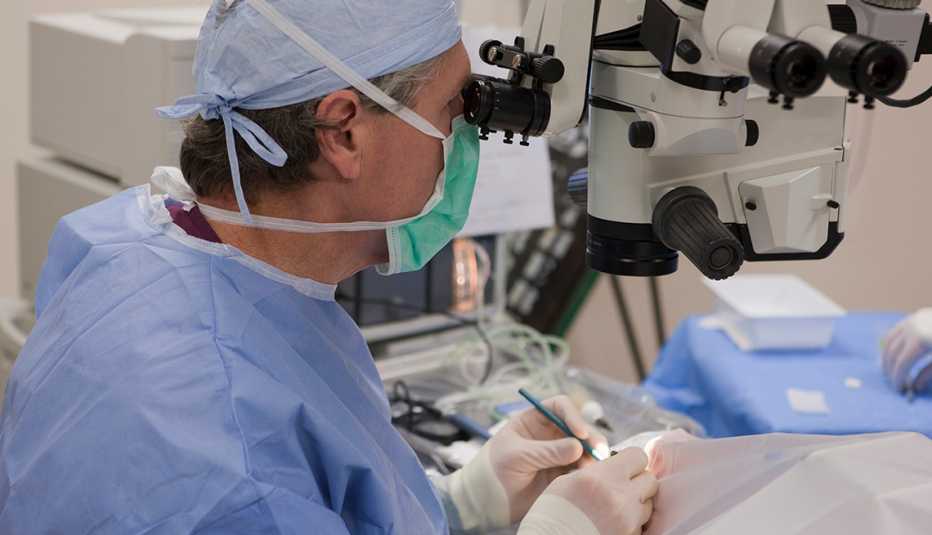AARP Hearing Center


Cataract surgery is widely viewed as a silver bullet. Those who've had it will gush about how it eliminates bothersome visual fog and night-time driving glare; adds crispness to their reading, and restores their vision to 100 percent of what it was before their cataracts developed — or even better.
And that is almost 100 percent true.
Some 4 million cataract procedures are done in this country each year and they are “overwhelmingly successful,” explains Christopher Starr, M.D., clinical spokesperson for the American Academy of Ophthalmology (AAO) and associate professor at Weill Cornell Medicine. One study showed that of 221,000 cataract surgery patients, 99.5 percent had no serious complications after their surgery. But, Starr warns, “It's real surgery...and with any surgery there are always potential risks.”
Patients should be aware of the common after-surgery side effects, as well as the rare complications that can occur. Early treatment can eliminate most of the problems.
Getting ready for surgery
Be sure to have a “preoperative evaluation” done, says Ravi Goel, M.D., clinical spokesperson for the AAO and ophthalmologist at Regional Eye Associates in Cherry Hill, New Jersey. Any pre-existing conditions you have, he says, such as diabetes, retinopathy, macular degeneration, glaucoma, are an important part of your pre-surgery evaluation and discussion. Also, Goel adds, if you are very near sighted, or have high myopia, or pathological myopia, these factors should be discussed.
Follow your physician's pre-surgery instructions meticulously, so you are fully prepared. That may include obtaining any medications you may need post-surgery.
Surgery
The actual cataract surgery takes only about 20 minutes, is done under local anesthesia, and is painless. Typically, a prophylactic antibiotic and perhaps pressure-lowering drops or ointment will be put on your eye to help the healing start immediately, Goel says; and a patch or a shield will be placed over the eye.
After surgery, have the person who will drive you home listen to any additional instructions you're given, just in case you're a bit groggy, and don't catch everything.

































































More on Health
New Vision Tests and Technology Can Help Save Your Sight
Open your eyes to these bright new solutionsTop Causes of Vision Loss and Blindness
What to know about macular degeneration, glaucoma and other eye problemsThe 10 Best Superfoods for Your Eyes
Protect your vision with these nutritious (and delicious) foods